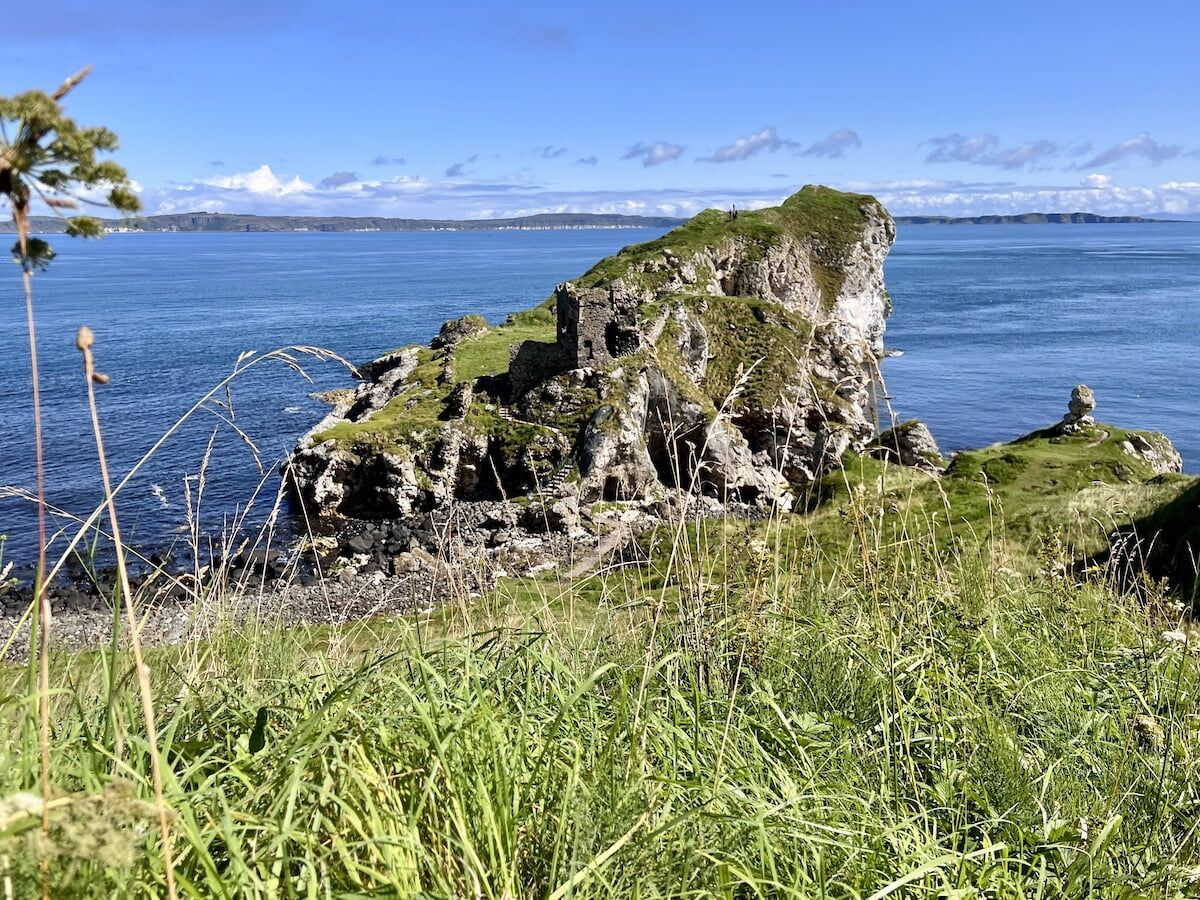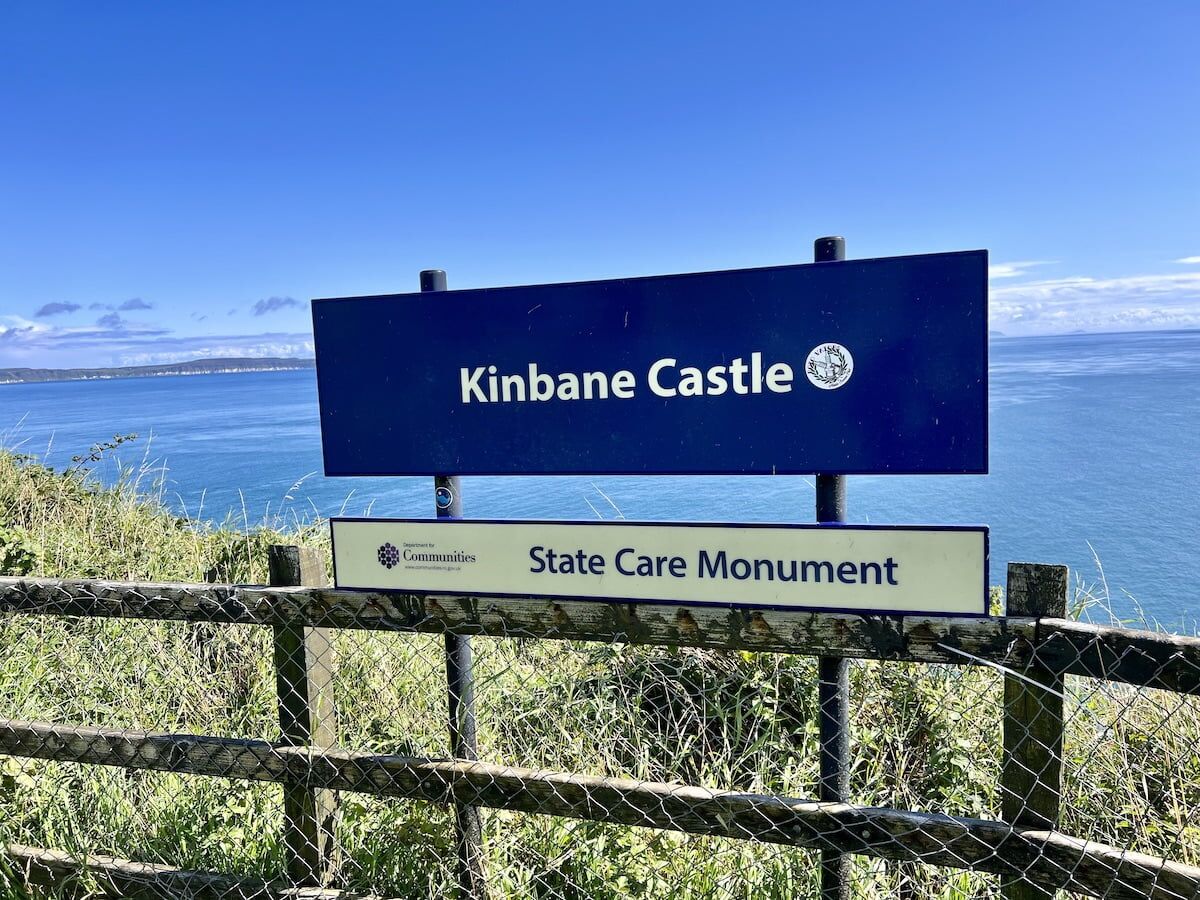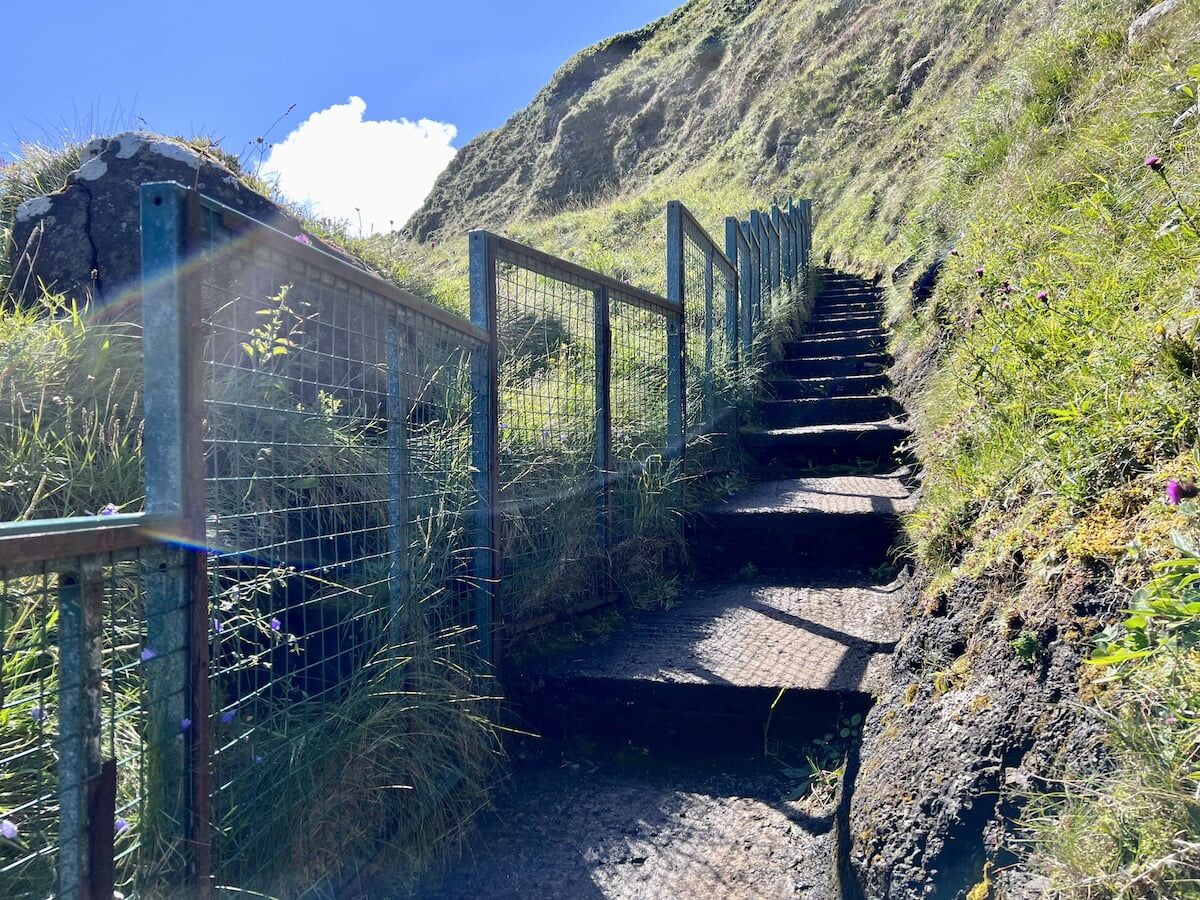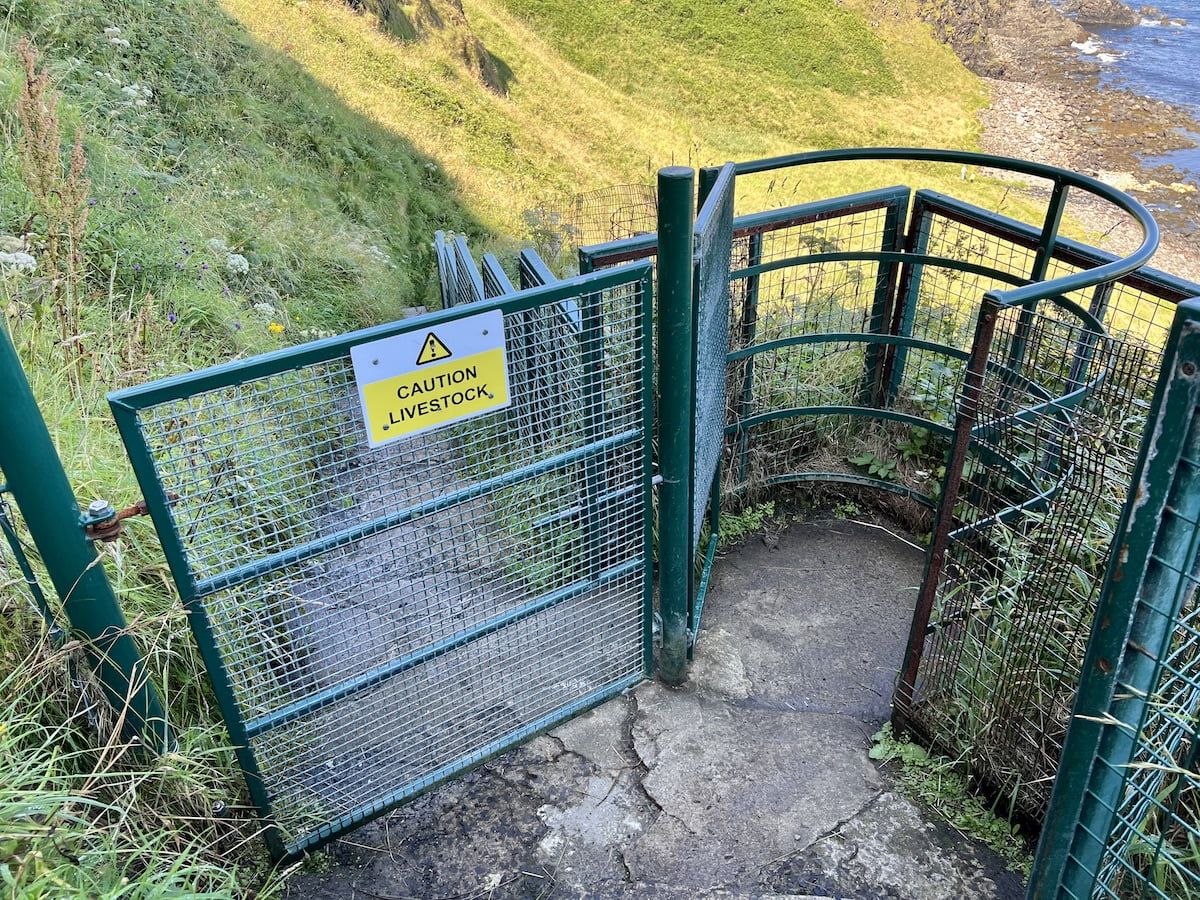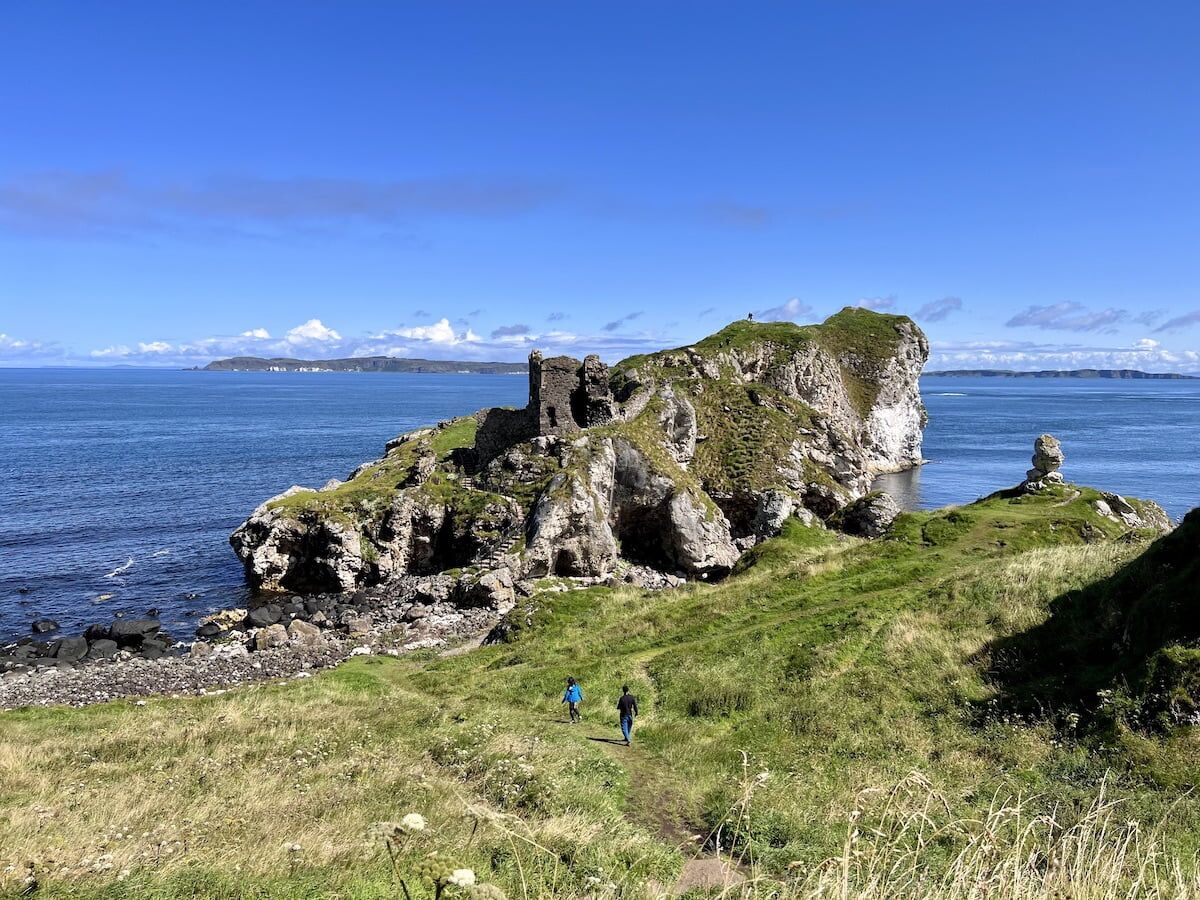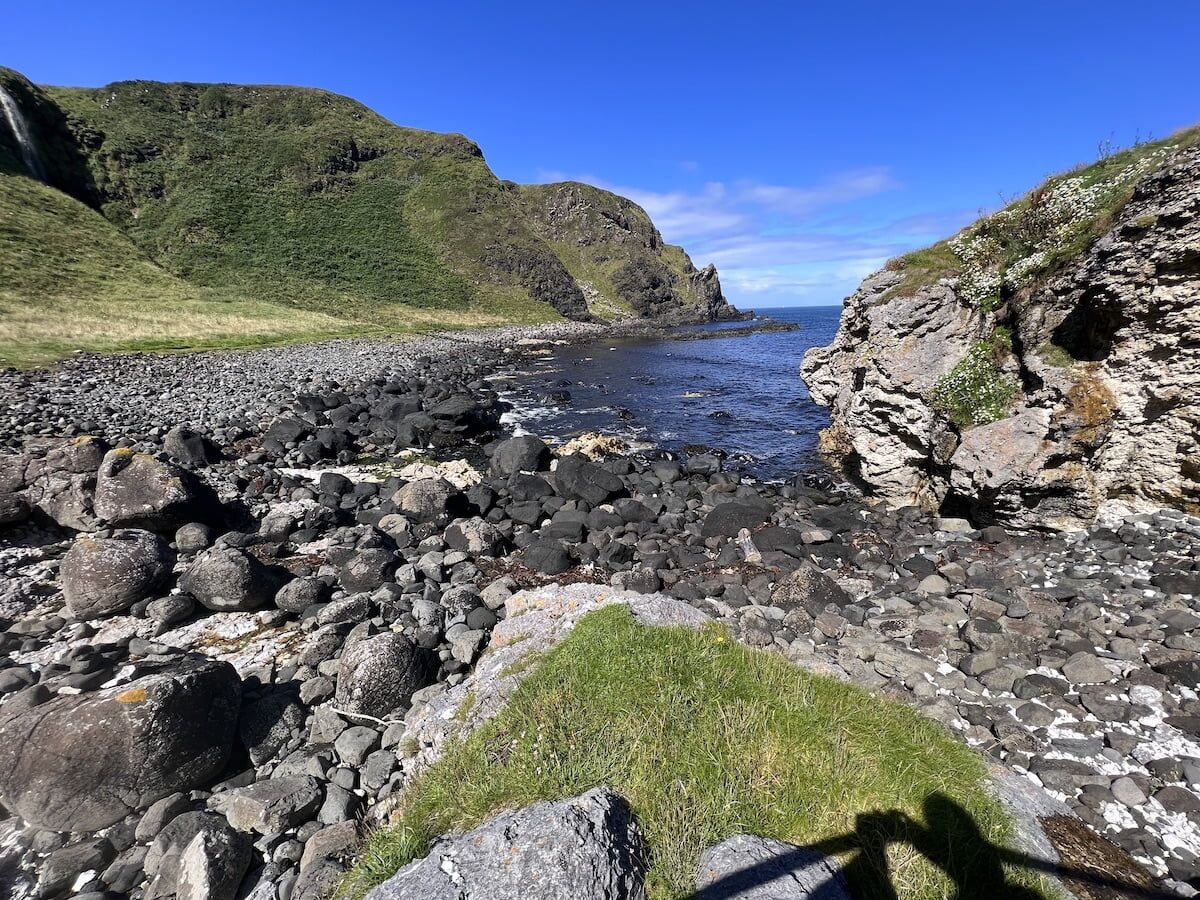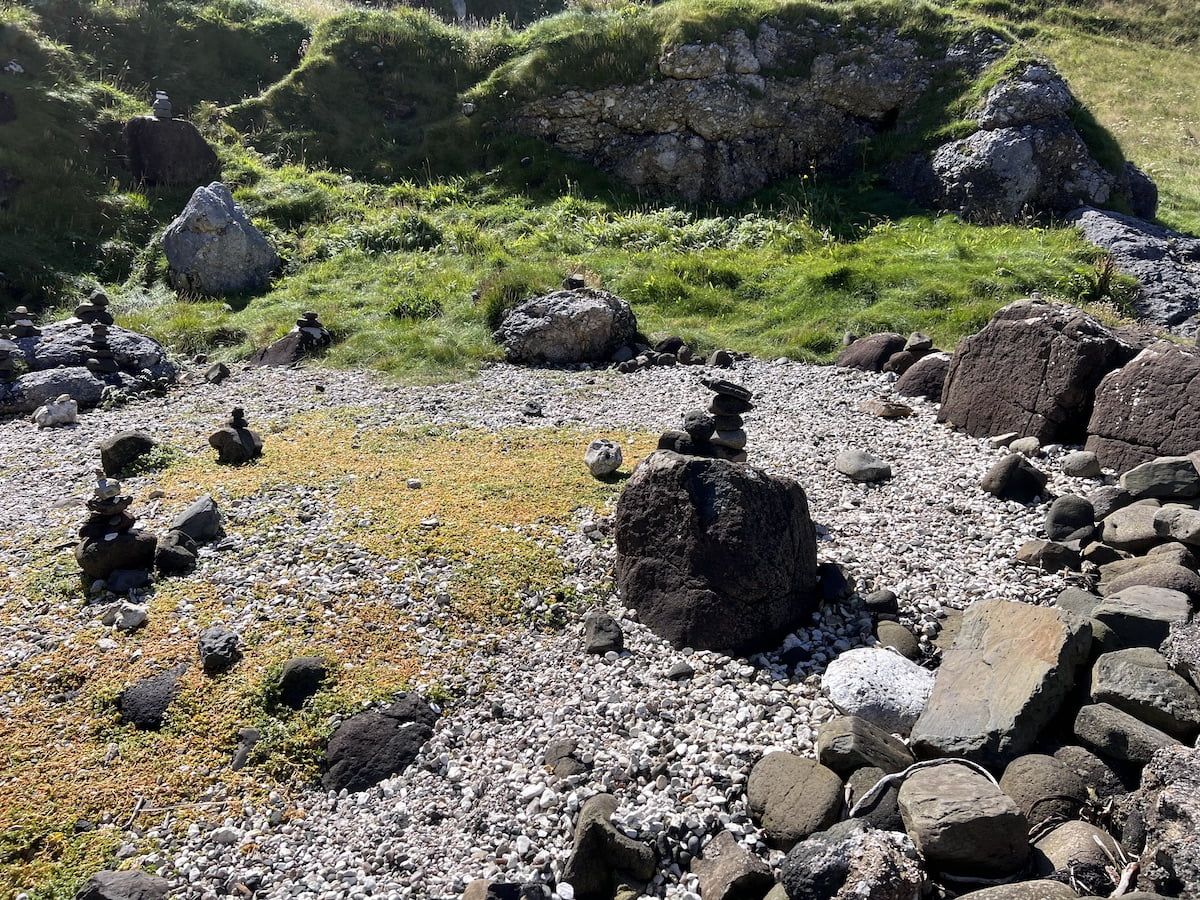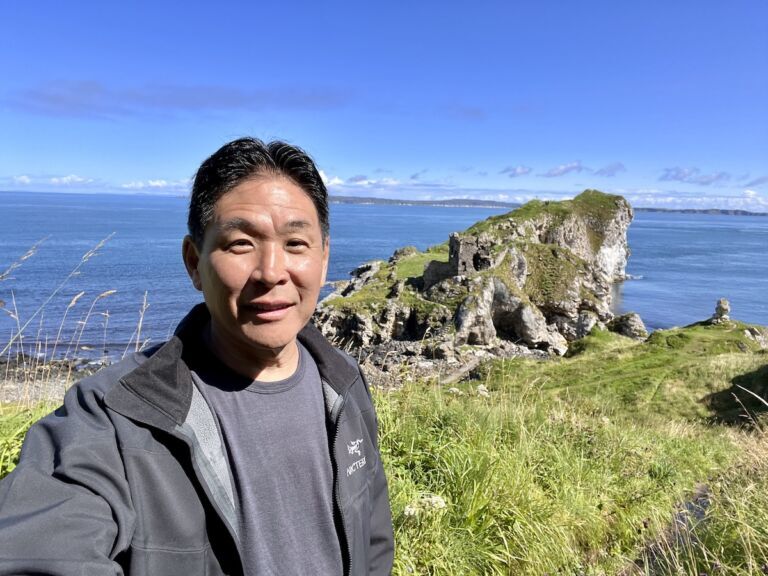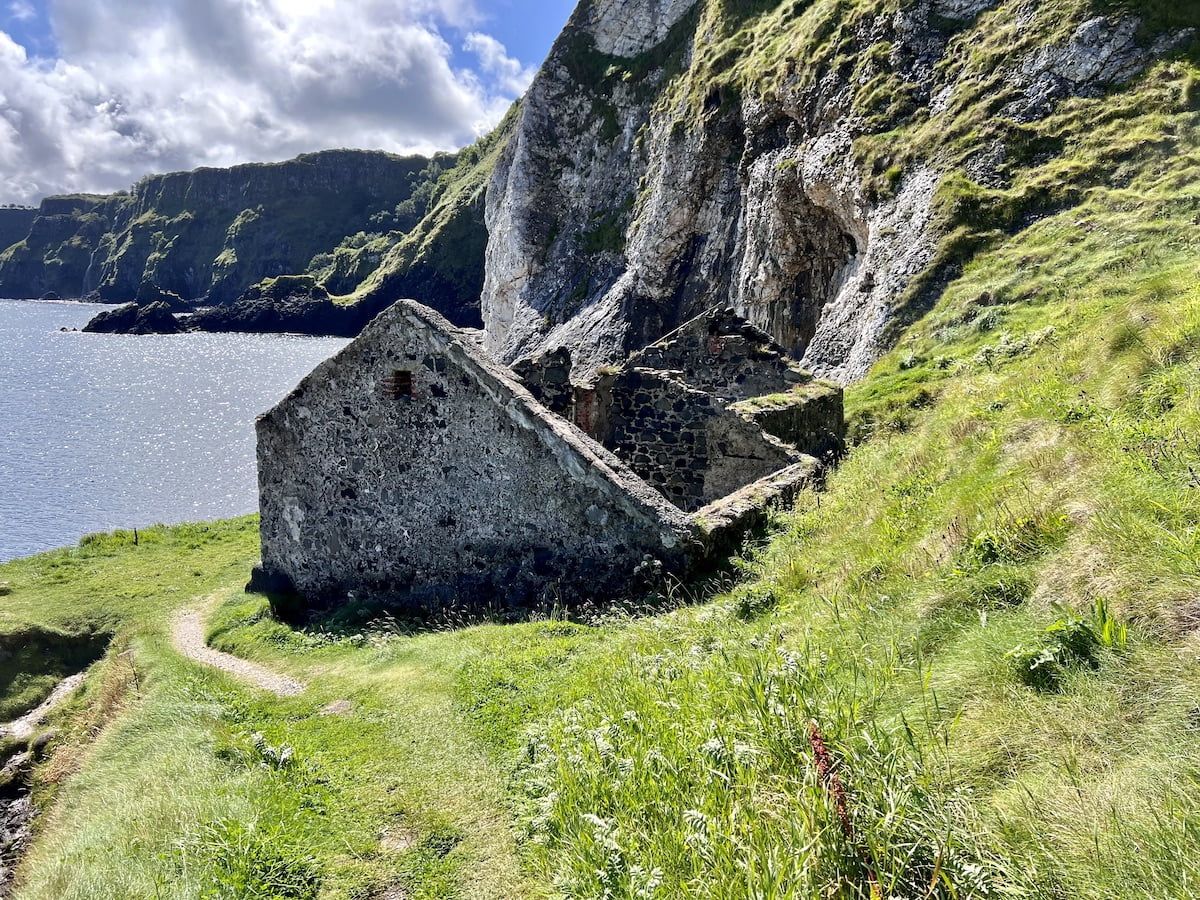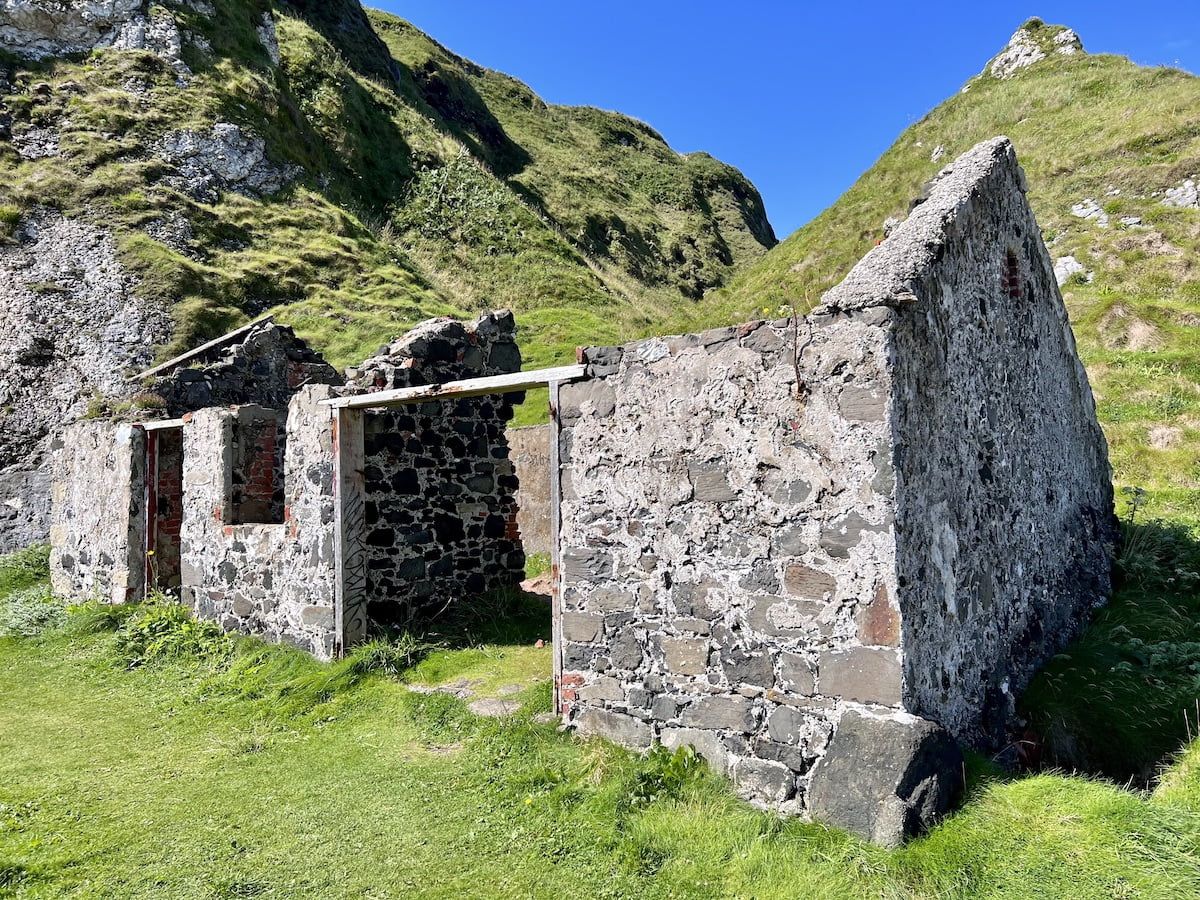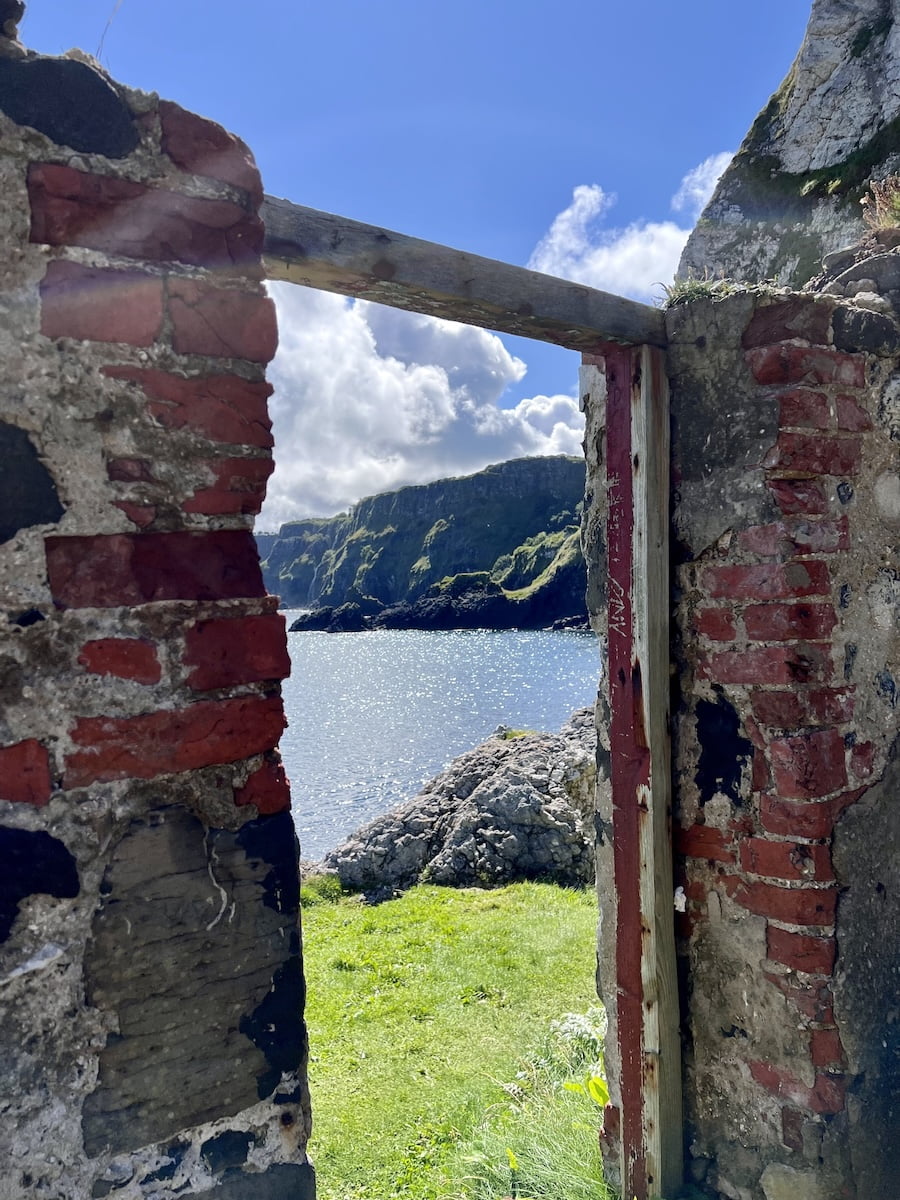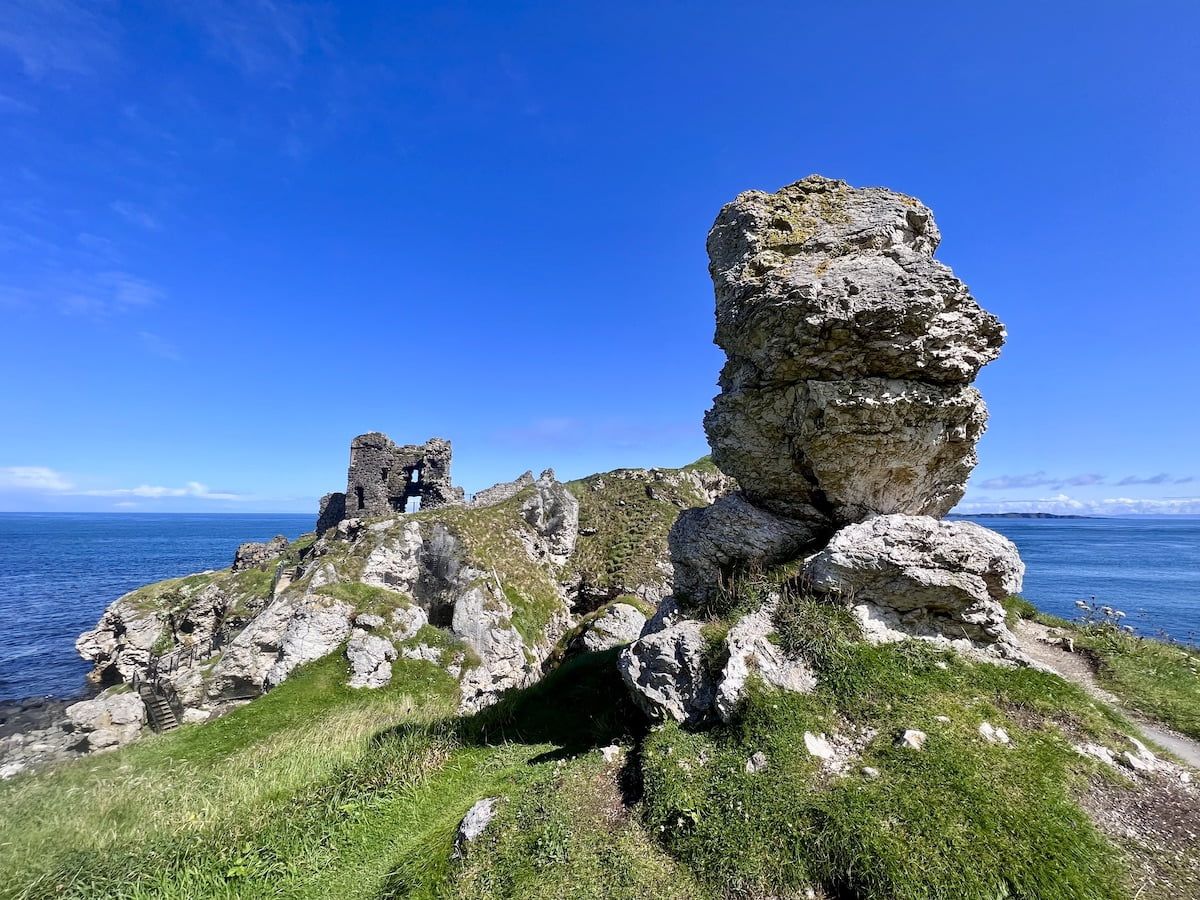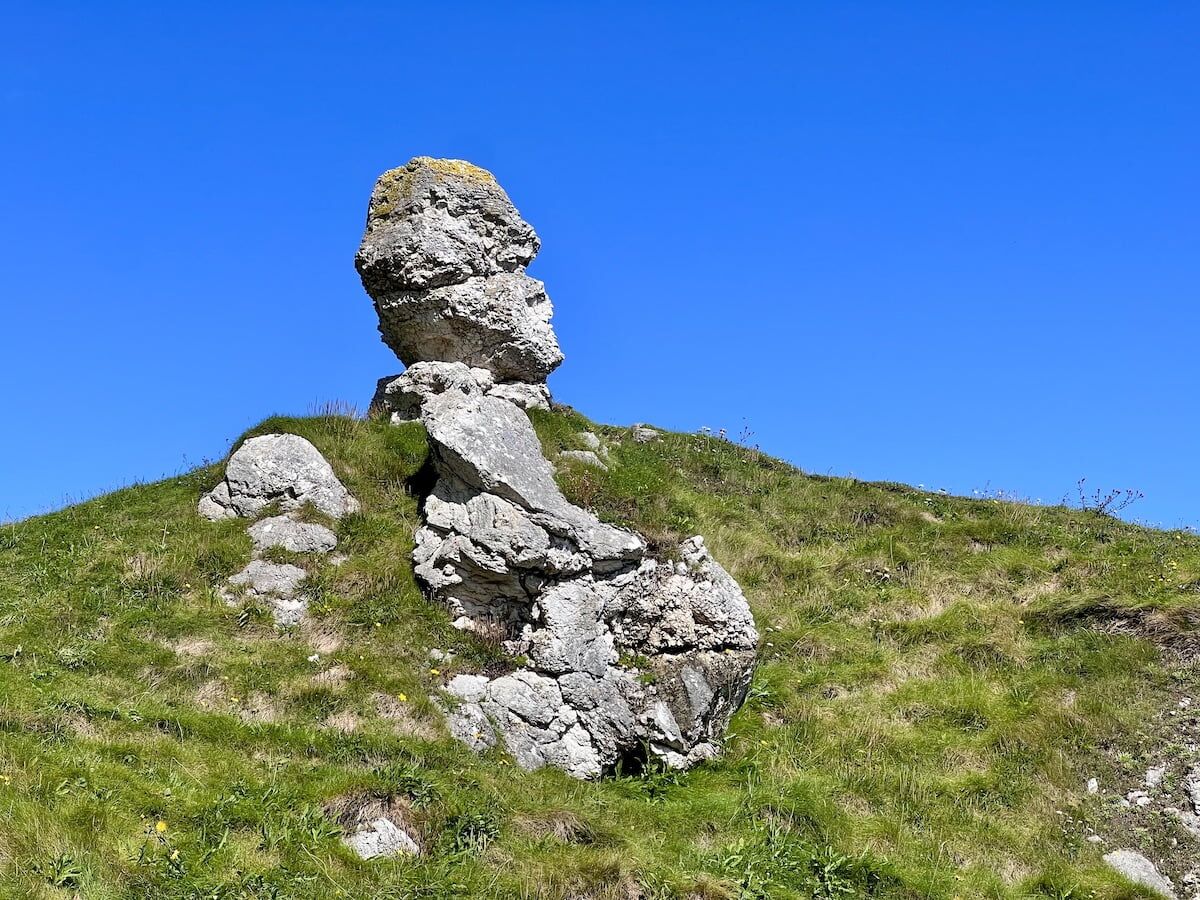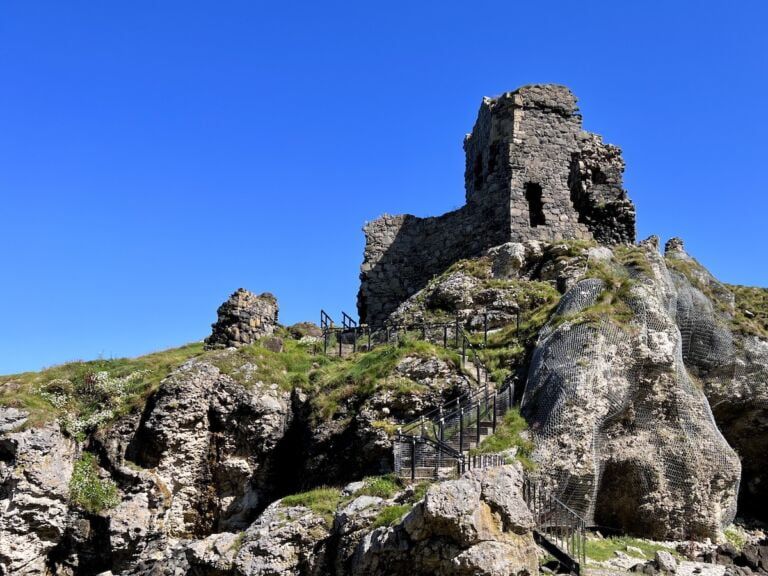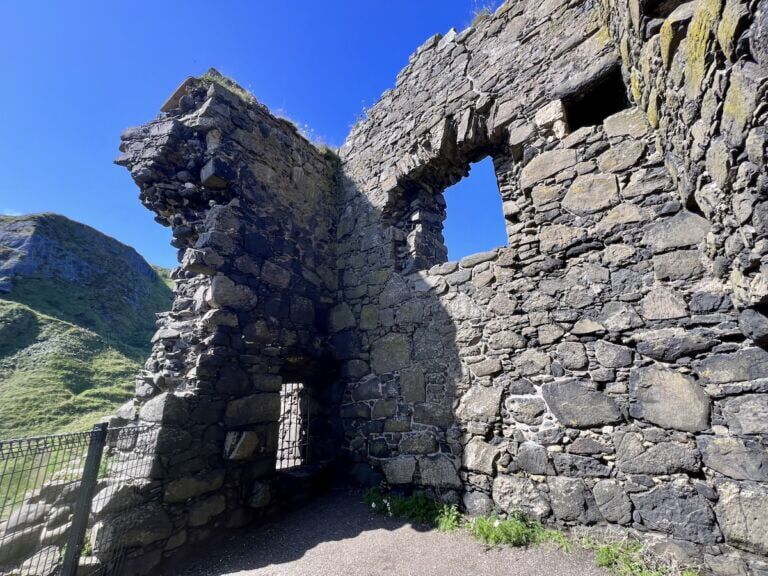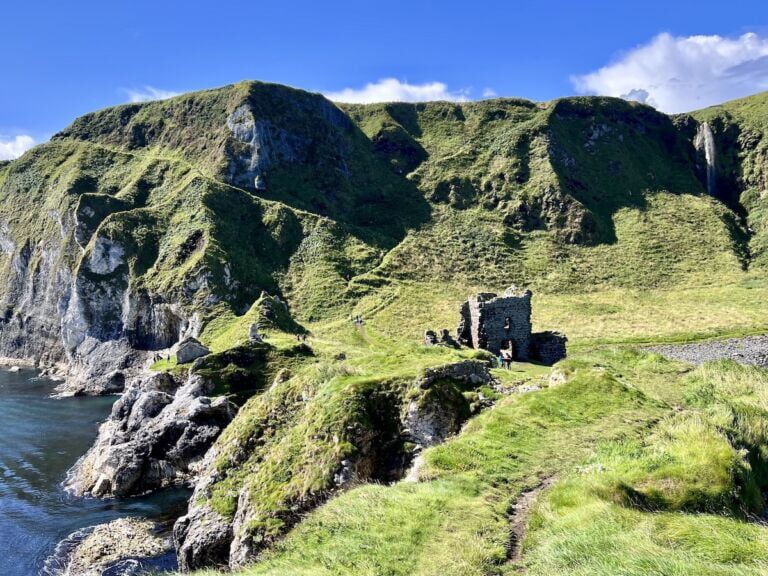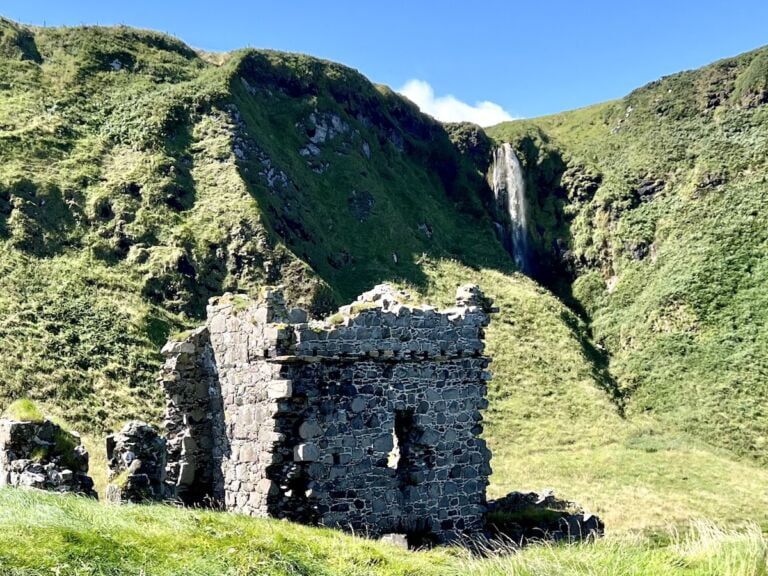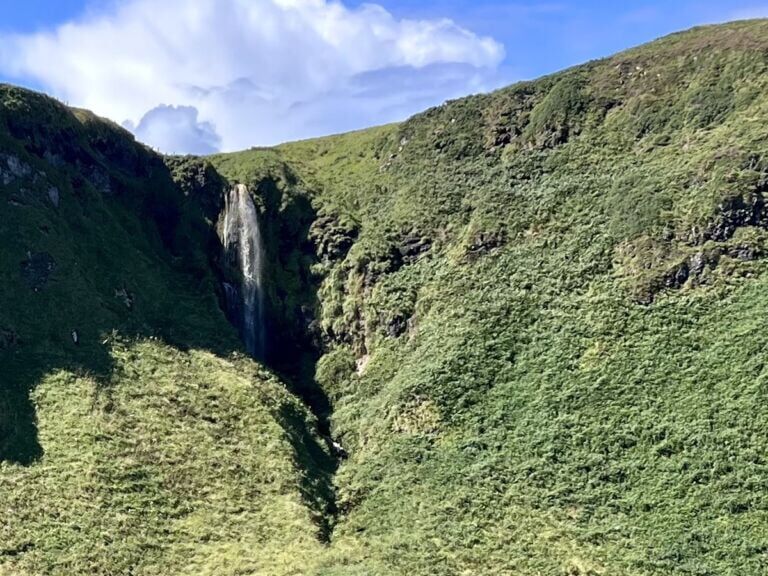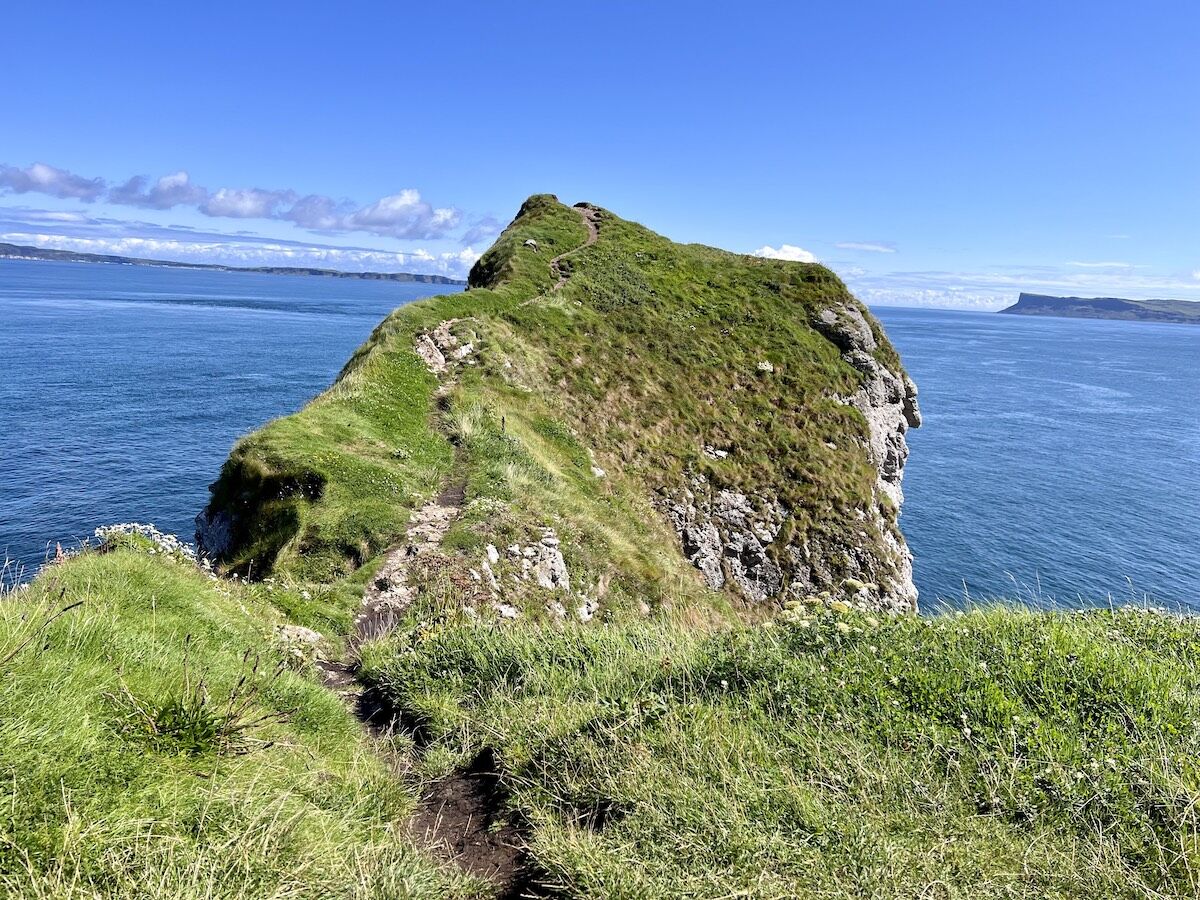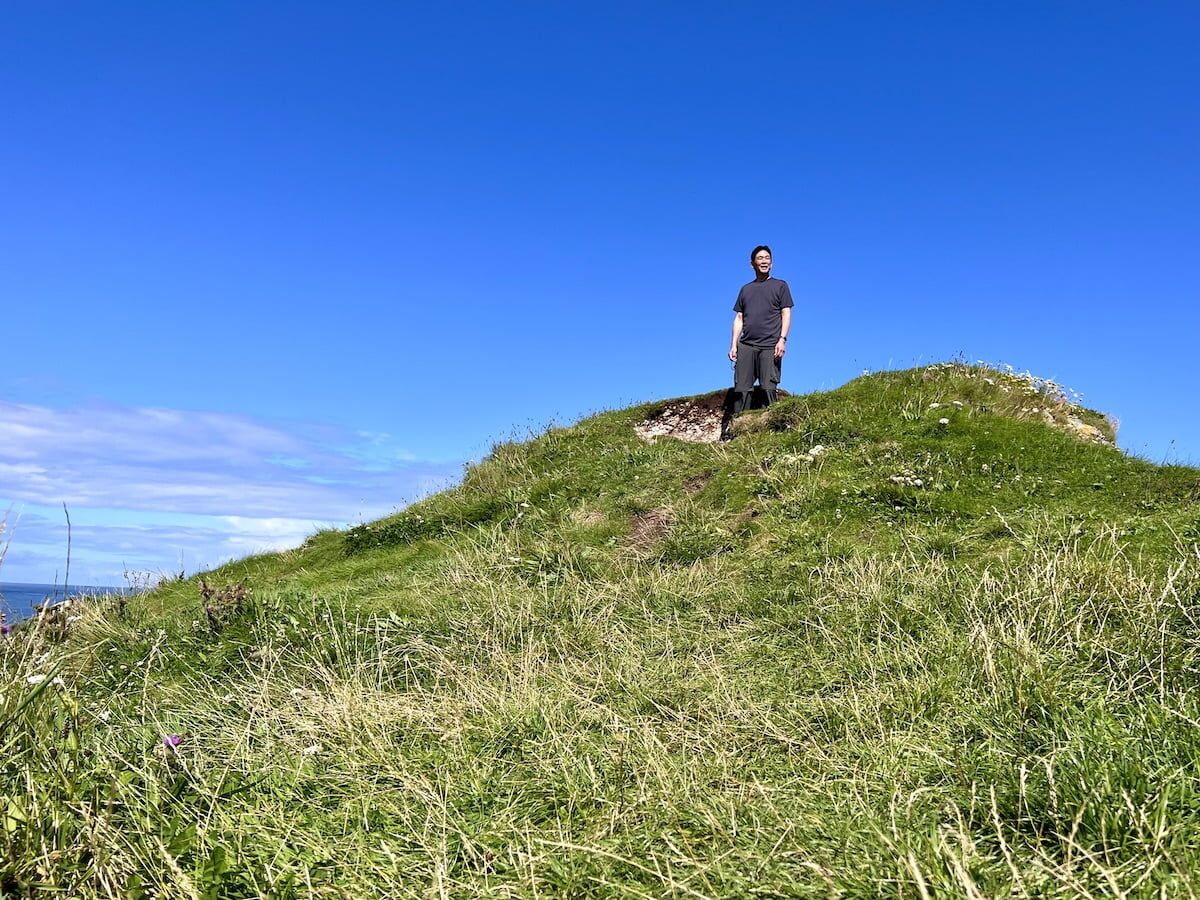7 Breathtaking Photo Spots on the Kinbane Castle Tour
Kinbane Castle, constructed in the 16th century, stands on the rugged cliffs of Northern Ireland’s Antrim coastline. It’s rugged location, and a long path of steps from the visitor parking lot, means that it’s not going to be overrun with hoards of tourists. It’s a quieter experience with spectacular views.
Trekking down the pathway to Kinbane Castle transports you back in time when nature ruled. Kinbane Castle offers breathtaking views of the the North Atlantic Ocean, limestone cliffs, and the rugged coastline. Surprisingly there was even a waterfall along the cliffs. The castle itself is on a long, narrow limestone headland, which you can walk along if you have a modestly adventurous spirit and ability. The reward is a visual feast.
Sun, Aug 6: Antrim, Northern Ireland
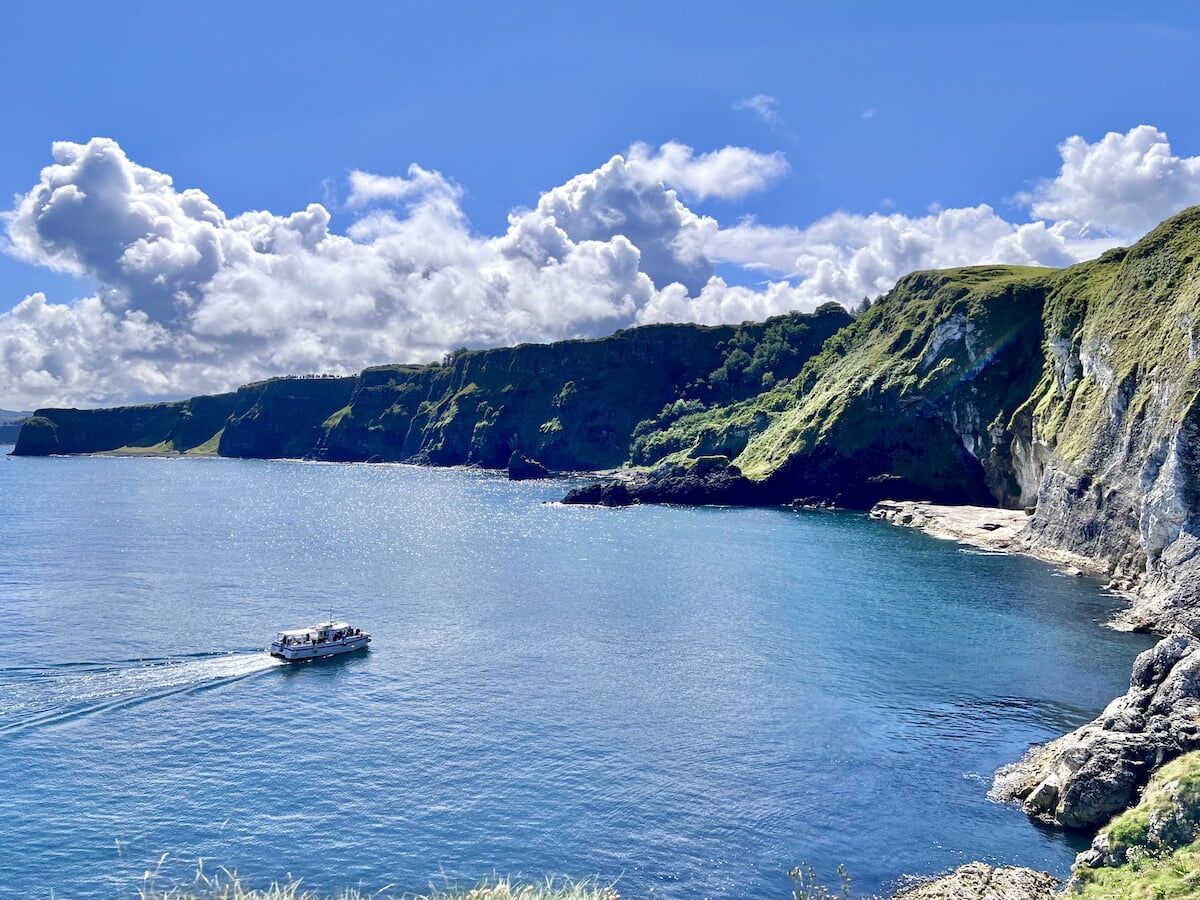
Your Journey to Kinbane Castle
Follow the signs on the A2 to Kinbane Castle. There’s a small parking lot at the entrance to the trail, that has building with a decent restroom. Rest up here and head to the stairs when you’re ready.
The steps are longer in length so it’s not as intense a descent as some would suggest. Helps tremendously if you go on a non-rainy day.
Touring Where Kinbane Head Meets the Sea
After descending down the cliffside, you reach the Kinbane shoreline where there are three photo spots where you can capture the Kinbane Castle, the Fisherman’s Cottage, and the limestone outcrops.
The Fisherman’s Cottage (or Fisherman’s Bothy) is a small stone structure near the castle. It’s not as old as the castle, but the exact age is unknown. The cottage served as a home as well as a vantage point where the fishermen could gauge the condition of the sea before venturing on their perilous journeys.
“Remember, the most beautiful coastlines were carved by the fiercest waves.”
Anonymous
A Closer Look at Kinbane Castle
After you make your way down the cliff, it’s a short walk to the base of the castle, Another set of stairs gets you there. Some metal fencing on the side helps keep future erosion in check. The castle was build by Colla MacDonnell in 1547 to provide a strategic vantage point against invaders.
Even in its ruined state, Kinbane castle makes for breathtaking photos. Whether you are viewing up close, or stepping back to pull in the dramatic landscape, there’s a lot of postcard-worthy opportunities.

Reaching the Tip of Kinbane Headland
Just when you thought the long road from the parking lot down then up to the castle was over, there is a narrow, rocky foot path to the end of the head. Should you make the effort to make the trek, you’ll be rewarded with the best photo spot of the site. They saved the best for last.
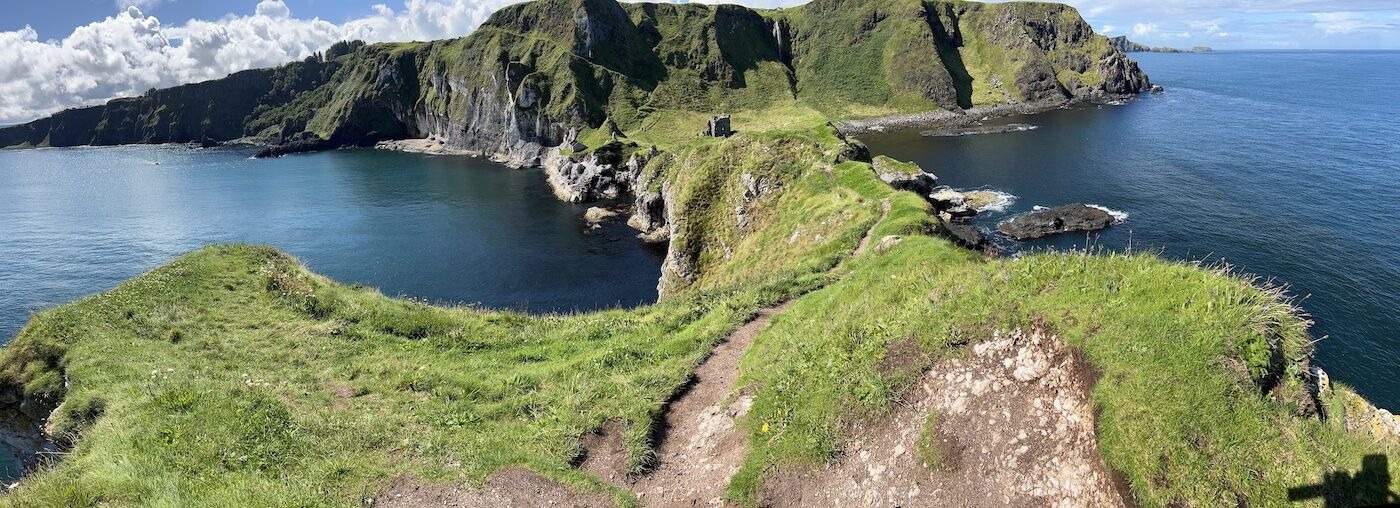
Kinbane Castle Tour Review
After researching Kinbane Castle, it became one of my must-see sights on my Belfast, Northern Ireland Tour. Not simply for the breathtaking photos that I saw, because there are a lot of places that have that – It was that there was a lone stone castle standing amongst the scenery. Like a cherry on top of a scoop of ice cream.
The other enticing aspect was that it was a low-traffic tourist site, which gives a better opportunity to appreciate the landscape without distractions. The steps down the cliff were gave an ever widening glimpse onto the amazing view of Kinbane Castle against the North Atlantic Ocean backdrop.
As you have seen, Kinbane Castle at Kinbane Head is a spectacular site. While it does take some effort to get to the castle, it’s also the same feature that keeps out the casual tourists. The castle itself is rather modest in size, but retains the authenticity of its prior splendor. A beautiful blend of old world architecture and picturesque coastline.
Some of the dirt and stone paths are slippery, so take things slowly. By projecting out into the North Channel and Atlantic Ocean, Kinbane head presents an amazing view of the Northern Ireland Anthem Coastline. Highly recommended if you are comfortable walking the steps, and uneven ground.
Now check out my other favorite site in Irelend, the Four Knocks Tomb.
Or go check out Kinbane Castle on google.
..What are your thoughts about the Kinbane Castle? Let us know in the comments below.
Part of the ToursByLocals Ancient Ireland Tour
